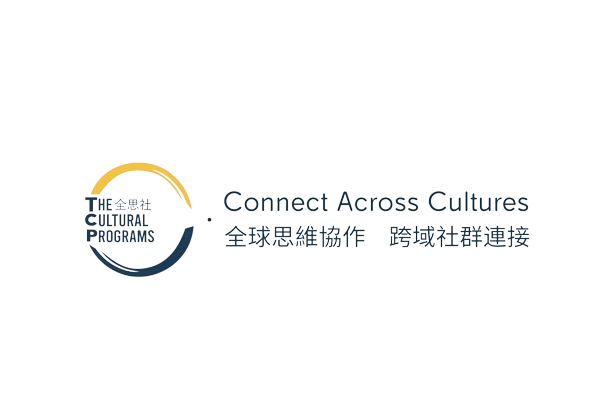
The Dual Dance of AI: Where Algorithms Meet Appreciation in Leadership
The Dual Dance of AI: Where Algorithms Meet Appreciation in Leadership https://tcpgrowth.com/wp-content/uploads/2025/07/1750824689666-1024x576.png 1024 576 Margot Margot https://secure.gravatar.com/avatar/75f28def25c851b6f804ac2b5cd1e63c3d690c4a349608ae1b4e08eee760a942?s=96&d=mm&r=g- Margot
- no comments
I’m a fan of technology but also a believer in leadership development across cultures.
In today’s fast-evolving world, artificial intelligence (AI) is no longer just a technological marvel; it is a cultural force reshaping how we think, behave, and lead.
However, AI isn’t only about algorithms and data. It’s also about appreciation – appreciative inquiry that fuels growth, innovation, and human connection. Similarly, machine learning (ML) is not just about machines crunching numbers; it’s about mindful leadership that embraces learning, adaptation, and empathy.
This fusion of technology and culture is where transformative leaders thrive – especially in Asia’s innovation hubs.
Technology and Culture: Inseparable Forces Shaping Leadership
Technology alone cannot unlock human potential without cultural insight and ethical stewardship.
Leadership that embraces both sides - technical innovation and human-centred inquiry - creates environments where teams can adapt, grow, and innovate sustainably.
Ignoring either dimension risks stagnation or ethical pitfalls, especially as AI’s impact deepens across societies.
Research underscores this dynamic:
- A comprehensive review by Ca’ Foscari University and LUISS Guido Carli University highlights that digital technologies and leadership influence each other recursively – leaders shape digital culture while technology reshapes leadership practices (Bresciani & Ferraris, 2020).
- Gartner reports that 70% of organizations that misalign technology initiatives with cultural priorities fail to achieve desired business outcomes (Gartner, 2023). Companies integrating technology with strong cultural foundations are nearly twice as likely to lead innovation.
- McKinsey & Company finds that organizations embracing digital transformation are 26% more profitable than peers, emphasizing that technology reshapes not only processes but organizational values around adaptability and continuous improvement (McKinsey, 2022).
- Harvard Business Review notes that technology-driven innovation fosters positive work environments and higher employee engagement (HBR, 2023).

DBS Bank’s Human-Centered AI Journey
When DBS Bank embarked on its AI transformation, success depended on more than just deploying advanced technology.
The Tech: DBS implemented AI-powered tools to enhance customer service, improve risk management, and streamline operations.
The Human Shift: Rather than focusing solely on technology, DBS invested heavily in upskiling employees and fostering a culture of continuous learning. Leaders embedded appreciative inquiry into their transformation process – encouraging teams to identify what was working well and how AI could amplify those strengths.
The Outcome: The bank achieved a 30% increase in operational efficiency, higher employee engagement, and improved customer experiences (DBS Annual Report, 2023). This demonstrates how balancing algorithms with human-centred appreciation drives sustainable success.
Source: DBS Bank. (2023). Annual report 2023.
Alibaba’s Ling Shou Tong — AI with Chinese Characteristics
When Alibaba launched Ling Shou Tong (零售通), its AI-powered retail platform for mom-and-pop stores, success hinged on more than algorithms.
The Tech: AI optimized inventory, logistics, and personalized recommendations for shop owners.
The Human Shift: Instead of displacing local merchants, Alibaba trained them to use AI to amplify their community relationships and business intuition. “Appreciative Inquiry” workshops identified shopkeepers’ strengths – customer rapport, local knowledge – and showed how AI could enhance.
The Outcome: Over 1.5 million stores digitized, with 30% average revenue growth. Merchants reported renewed purpose, while AI handled logistical complexity (Alibaba Group, 2024). This is human-centred AI in action: technology elevating cultural wisdom.
Source: Alibaba Group. (2024). Ling Shou Tong: Digitizing China’s mom-and-pop stores. Alibaba Group Internal Report.

A Personal Experience: From Satellite TV to the Digital Frontier
Back in the late 2000s, I was part of a pioneering team at Star TV tasked with creating and monetising “new media content” – building online properties and distributing TV content onto mobile platforms. This was before “digital” was a buzzword and long before Netflix dominated screens.
I helmed the new media product and distribution for the Chinese language properties and acted as the bridge to communicate with channel heads.
Opinions were split.
Some leaders were enthusiastic about online platforms and OTT (over-the-top) content, pushing hard despite skepticism and obstacles. Others clung to traditional broadcasting models.
Today, OTT platforms are mainstream.The leaders who thrived were those who embraced new technology and adapted their mindset. Those who didn’t? Well, they’re still catching up.
This experience reinforced for me that technology and culture are inseparable, and leadership must balance both to succeed.
Navigating uncertainty with a growth mindset and a willingness to learn makes a huge difference in leadership.
When Tech Meets Leadership
Here’s a chart I enjoy sharing to remind us that tech acronyms can carry more than one meaning – especially when leadership is involved.

Questions for Leaders in the AI Era
I encourage you to reflect on these:
- How do I integrating technological innovation with human-centred inquiry in my leadership?
- What strengths in my team can AI help amplify rather than replace?
- How am I cultivating a growth mindset to keep pace with AI-driven change?
Lead with Both Head and Heart
The AI era isn’t about choosing between technology, people, or culture. It’s about weaving them into a balanced leadership approach. When you combine algorithms with appreciation, and machine learning with mindful leadership, you don’t just keep up – YOU THRIVE!

PS. And just so you know, ML doesn’t only mean Machine Learning. It also means Margot Ling (me) – a friendly reminder that behind every acronym is a human ready to lead with heart.

- Post Tags:
- GlobalLeadership
- intercultural
- leadership
- Posted In:
- Home articles
- Margot Ling



Leave a Reply